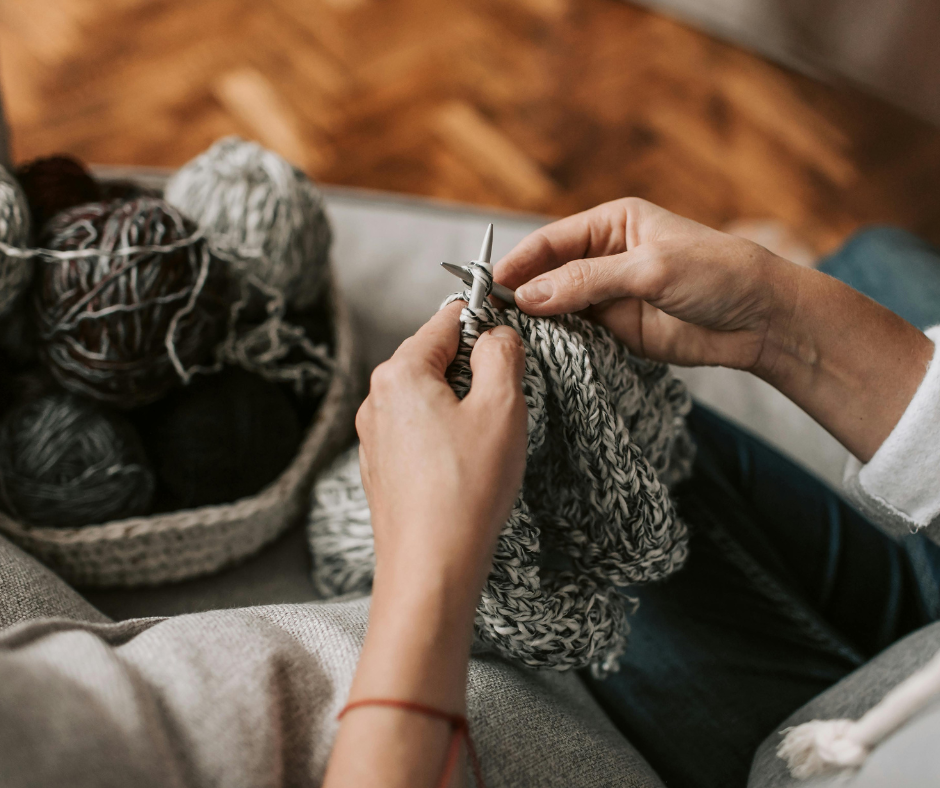In our fast-paced world, stress, anxiety, and burnout have become common companions. We’re constantly connected, frequently overwhelmed, and often stretched thin by expectations and responsibilities. In such a whirlwind, finding stillness feels like a luxury—until you pick up a pair of needles and a skein of yarn.
Knitting isn’t just a hobby; it’s a powerful, therapeutic practice. It’s a quiet rebellion against the chaos, an intentional pause that can lead to emotional healing, mental clarity, and personal empowerment. Whether you’re an artist, a professional, a student, or a parent, knitting offers more than scarves and sweaters—it offers solace, structure, and strength.
1. Knitting and Mental Health: More Than Just a Distraction
Science backs what knitters have known for generations: the repetitive motion of knitting has profound effects on the brain. It activates the parasympathetic nervous system, which is responsible for calming the body and reducing stress hormones like cortisol.
A study conducted by the University of British Columbia found that over 80% of participants reported significant improvement in their mental well-being after taking up knitting. It helps reduce depression, anxiety, PTSD symptoms, and even feelings of loneliness. The simple act of stitching one row at a time becomes a metaphor for progress—even when life feels tangled.
2. Knitting and Cognitive Function: A Workout for the Brain
Knitting is a cognitive exercise. It improves focus, memory, and problem-solving skills. It requires counting, pattern recognition, hand-eye coordination, and forward planning—skills that stimulate both the left and right hemispheres of the brain. For older adults, knitting can help delay cognitive decline and fight off conditions like dementia and Alzheimer’s.
Every stitch is a mindful moment. In a world of constant distractions, knitting keeps you present. It’s one of the few activities that naturally combines mindfulness and productivity.
3. Building Confidence Through Creation
Imagine starting with nothing but yarn and ending with something functional, beautiful, and entirely your own. That’s not just craft—it’s creation. Knitting boosts self-esteem and gives you a sense of accomplishment. It proves, over and over, that you are capable of learning, creating, and finishing what you start.
For those battling depression or low self-worth, this act of creation can be profoundly healing.
4. A New Form of Community and Connection
Knitting is no longer a solitary act reserved for quiet evenings. Online knitting groups, community classes, and social meetups are thriving. These spaces offer connection without pressure, conversation without judgment, and a shared language rooted in loops and yarn.
At a time when digital isolation is on the rise, knitting builds bridges between generations, cultures, and perspectives. It’s a craft that creates conversation—and community.
5. The Urgency to Reclaim Stillness
In today’s world, our minds are bombarded with noise, to-do lists, and endless scrolling. We chase productivity at the cost of peace. But mental health cannot wait. Stillness cannot wait. Your healing cannot wait.
Knitting is an accessible, affordable, and deeply transformative tool to take back your peace, focus, and joy. It invites you to slow down, breathe deeper, and reconnect—with your hands, your mind, and your heart.
Take Action Today
If you’ve never tried knitting, this is your sign to begin. Start small. Borrow needles. Watch a tutorial. Join a local or online group. Don’t wait for the perfect time—create the perfect moment by casting on your first stitch today.














